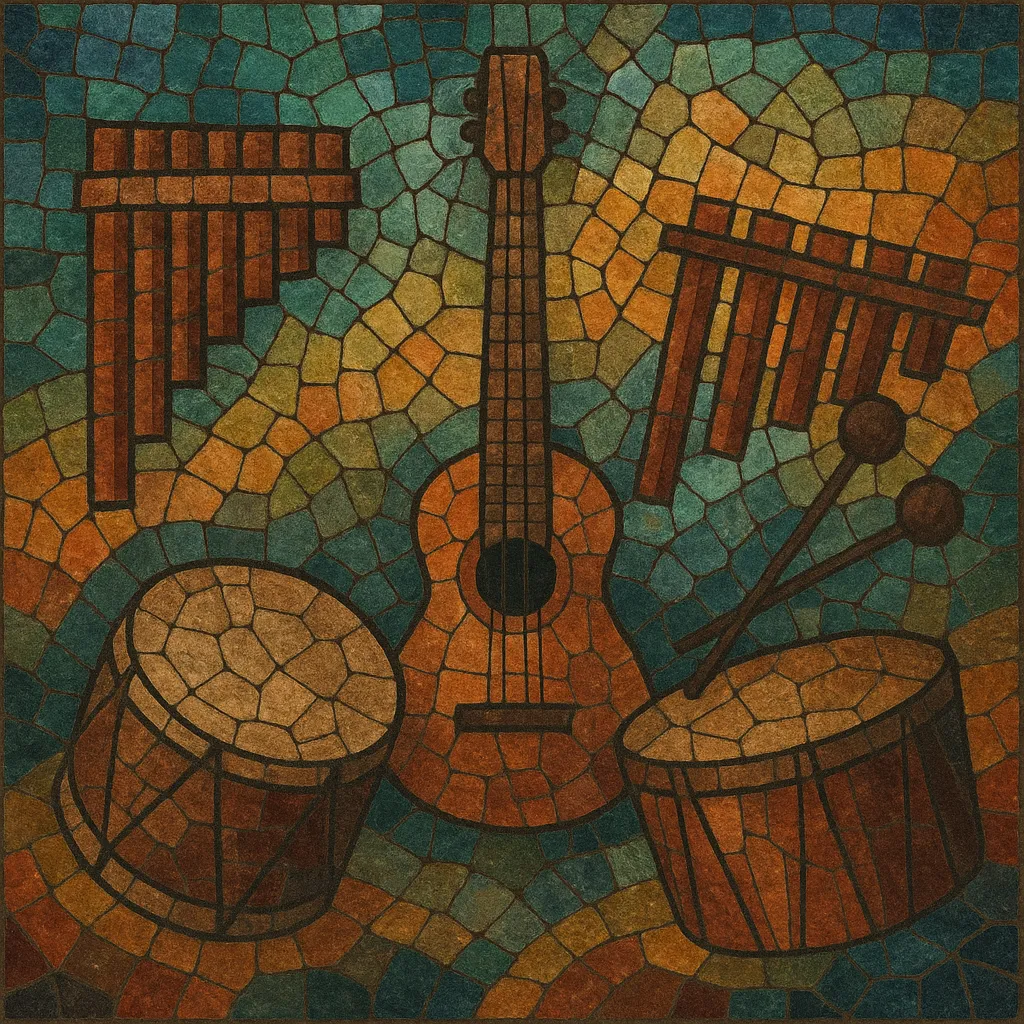Neofolklore is a contemporary Latin American fusion style that blends traditional folk instruments, rhythms, and melodies with modern electronic production.
It typically combines Andean flutes (quena, zampoña), charango, bombo legüero, and marimba with downtempo beats, sub‑bass, and atmospheric textures, resulting in music that feels both rooted in place and forward‑looking.
Rather than recreating folk music verbatim, artists recontextualize it through sampling, sound design, and minimal, groove‑oriented arrangements, often emphasizing hypnotic polyrhythms and spacious, nature‑evoking ambience.
The style is distinct from neofolk in Europe and from 1960s Chilean “neofolklore”; in current usage it refers to a 21st‑century, electronics‑inflected approach to Latin American folk traditions.
Neofolklore emerged in Buenos Aires club culture and DIY electronic scenes where DJs and producers began folding Andean and pan‑Latin folk elements into downtempo and dub‑wise frameworks. Zizek Club nights and the ZZK Records label catalyzed this movement by connecting cumbia’s digital mutation with deeper regional traditions—charango riffs, quena lines, and Afro‑Indigenous rhythms—treated with modern sampling and sound design.
Throughout the 2010s, producers across Argentina, Peru, Ecuador, and Chile refined a spacious, bass‑light aesthetic that favored earthy percussion, hand‑played motifs, and field recordings of birds, rivers, and street processions. Releases by marquee artists toured globally, and the sound intertwined with folktronica and global bass, while maintaining a slower, trance‑like pulse influenced by downtempo and dub. The scene became a bridge between local cultural memory and cosmopolitan electronic music, foregrounding respect for origins and careful contextualization of samples and collaborations.
A new wave of artists expanded the palette with Amazonian, Pacific, and Andean Coast influences, incorporating marimba traditions, Quechua/Shipibo vocal timbres, and ceremonial rhythms. Cross‑border collaborations became common, and the sound informed Latin alternative and indie electronic circuits. The emphasis on ecological imagery and decolonial narratives strengthened, as artists used neofolklore to explore identity, territory, and contemporary urban‑rural exchange.
Aim for a meditative, downtempo pulse around 85–110 BPM. Use syncopated, loping grooves that reference cumbia and Andean procession rhythms while leaving ample space for acoustic timbres and ambience.
Blend folk instruments—charango, quena/zampoña, bombo legüero, cajón, marimba, hand shakers—with electronic elements—sub‑bass, soft kick, minimal snares, and airy pads. Record or source field recordings (rain, birds, market ambience) to create a sense of place, and treat them as musical layers.
Favor pentatonic and modal flavors common to Andean music (e.g., Dorian, natural minor), short melodic cells, and call‑and‑response phrases. Keep harmony sparse—drones, pedal tones, and two‑chord vamps let acoustic lines and percussion breathe.
Start with a subtle cumbia‑derived swing or a ceremonial march feel. Layer hand percussion (bombo on downbeats, shakers on offbeats), then accent with syncopated rim hits or wooden clicks. Use light sidechain compression to glue sub‑bass and kick without overpowering acoustic instruments.
Prioritize organic textures: light saturation, tape‑like wobble, and roomy reverbs that suggest open landscapes. Pan acoustic parts wide and keep the center for kick, sub‑bass, and lead motif. Sample with cultural sensitivity: credit sources, collaborate with tradition bearers, and avoid decontextualized clichés.
If using vocals, integrate indigenous or regional languages respectfully. Lyrical themes often evoke nature, memory, migration, and community rituals. Process voices gently (short delays, plate reverb) to preserve intimacy while fitting the ambient space.
Build gradually from drones and percussion into a mid‑track apex, then resolve back to ambience. Alternate between instrumental passages and brief vocal or flute spotlights to keep the narrative flowing without crowding the mix.


